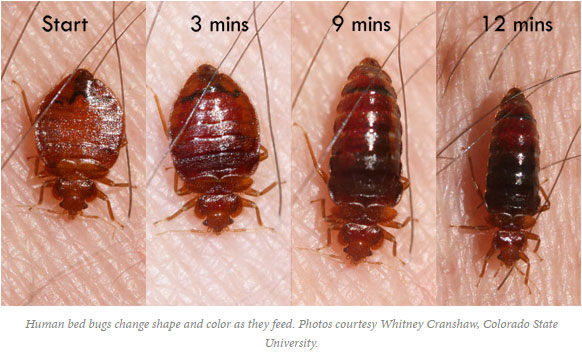Dependable A1 Bed Bug Treatment Houston - Proven Techniques
Wiki Article
Comprehending the Lifecycle of Pests for Targeted Control Techniques
Understanding the lifecycle of insects is a basic aspect of efficient pest administration approaches. By comprehending the numerous phases of development that pests undergo, an extra targeted and accurate technique can be embraced to manage their populaces. This knowledge not only sheds light on the vulnerabilities within the insect lifecycle yet additionally leads the way for executing calculated actions that can disrupt their growth and reproduction cycles. Via a deeper understanding of exactly how bugs thrive and develop, tailored control methods can be made to address specific factors in their lifecycle, ultimately resulting in even more successful bug monitoring outcomes.Value of Comprehending Parasite Lifecycle
Comprehending the lifecycle of insects is vital for creating effective and targeted control approaches in bug management. By understanding the different phases a pest goes via from egg to grownup, pest control specialists can recognize susceptible points in the lifecycle where treatment can be most successful.In addition, acknowledging the specific ecological conditions essential for each stage of the bug's lifecycle can lead decisions on habitat adjustment or exemption techniques to decrease and disrupt the lifecycle bug populations. This knowledge makes it possible for pest management professionals to apply aggressive measures as opposed to counting exclusively on reactive treatments, bring about more long-lasting and lasting parasite control options. Inevitably, a comprehensive understanding of insect lifecycles equips pest control specialists to customize their strategies successfully, lessening ecological impacts and maximizing control outcomes.
Key Stages in Pest Growth
To successfully implement targeted control methods in pest management, a vital aspect exists in thoroughly recognizing and comprehending the essential stages in parasite advancement. Insect development typically includes numerous crucial phases that are important for their lifecycle and administration. The initial stage is the egg stage, where pests lay eggs that later on hatch right into larvae. Larvae then progress into pupae, a stage where they go through metamorphosis prior to arising as grown-up bugs. Comprehending these phases is important as it aids in pinpointing weak spots in the lifecycle where control steps can be most reliable.

Susceptabilities in Insect Lifecycle
Throughout the numerous stages of a pest's lifecycle, distinct vulnerabilities emerge that can be strategically targeted for effective control measures (A1 bed bug extermination houston). One critical vulnerability lies in the egg phase, where bugs are usually extra susceptible to specific pesticides or organic control agents due to their soft outer shell, making them much easier targets for treatment. Understanding these vulnerabilities in the bug lifecycle is important for establishing reliable and specific control methods that successfully handle bug populations while reducing environmental effect.Carrying Out Targeted Control Actions

Implementing targeted control measures typically involves a multi-faceted approach. This may consist of environment modification to make the environment much less welcoming to pests, such as removing standing water for mosquito control or securing access factors for rodents. Additionally, organic control techniques can be utilized, where all-natural predators or microorganisms are introduced to keep parasite populaces in check.
Integrated Parasite Management (IPM) techniques that integrate numerous control actions in a coordinated and sustainable way are often the most effective in accomplishing lasting insect monitoring objectives. By carrying out targeted control procedures based on a complete blog understanding of insect lifecycles, pest populaces can be efficiently controlled while minimizing dangers to human wellness and the setting.
Enhanced Bug Administration Practices

In addition, the consolidation of organic control agents, such as all-natural predators or microorganisms of pests, can help in reducing dependence on chemical pesticides and promote a much more well balanced environment. Implementing physical obstacles and traps can additionally become part of boosted pest administration practices, using non-toxic and targeted options for pest control. Furthermore, using pheromones and other semiochemicals can interrupt pest breeding patterns and communication, causing lowered pest populations over time.
Conclusion
By identifying essential stages in insect advancement and vulnerabilities in their lifecycle, targeted control steps can be carried out to lessen bug populations. Improved insect administration methods can help reduce the dependence on broad-spectrum chemicals and advertise more sustainable and environmentally friendly insect control methods.Recognizing the lifecycle of parasites is essential for creating efficient and targeted control strategies in pest monitoring. By understanding the different phases a bug goes with from egg to adult, bug control experts can identify vulnerable factors find in the lifecycle where intervention can be most successful. Ultimately, a comprehensive understanding of parasite lifecycles equips insect control professionals to tailor their techniques properly, lessening environmental effects and making best use of control results.
By applying targeted control steps based on a detailed understanding of pest lifecycles, bug populaces can be efficiently managed while decreasing dangers to human health and the environment.
By identifying essential stages in insect advancement and susceptabilities in their lifecycle, targeted control actions can be executed to minimize bug populations.
Report this wiki page